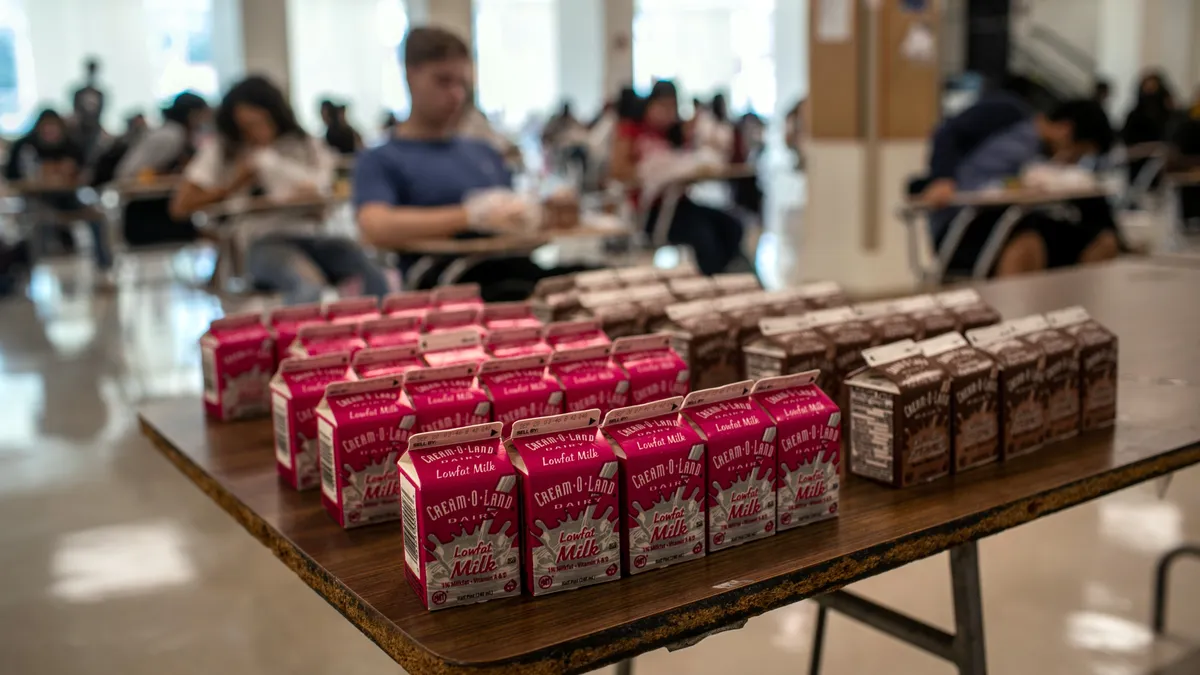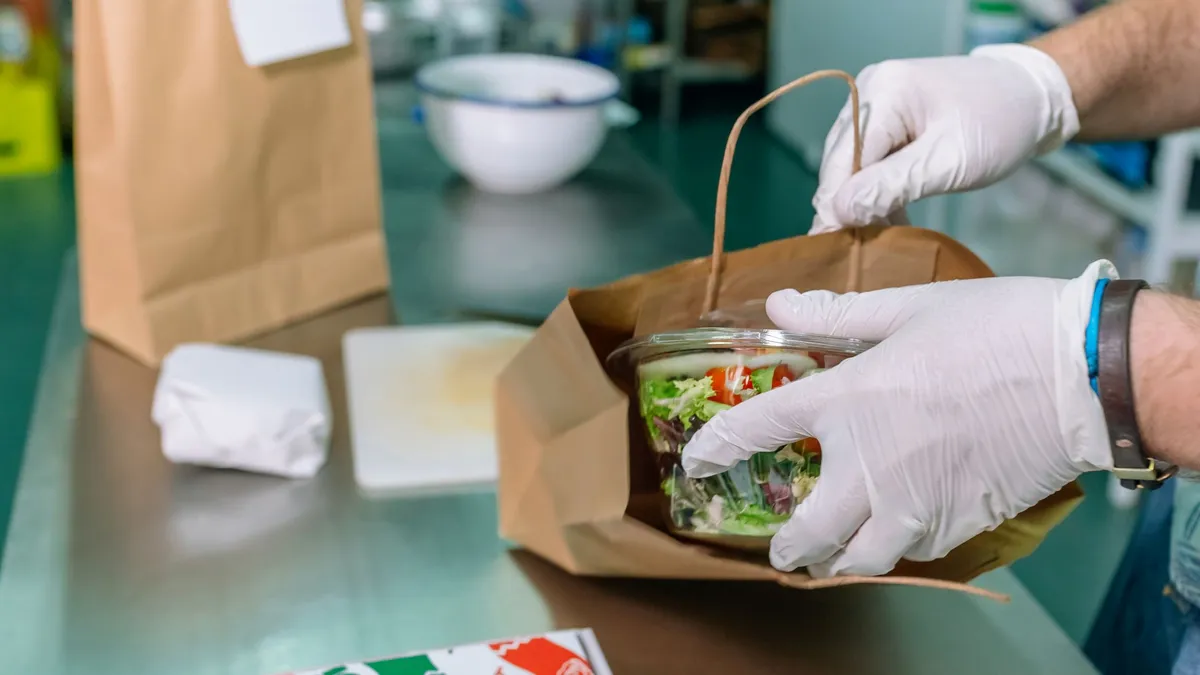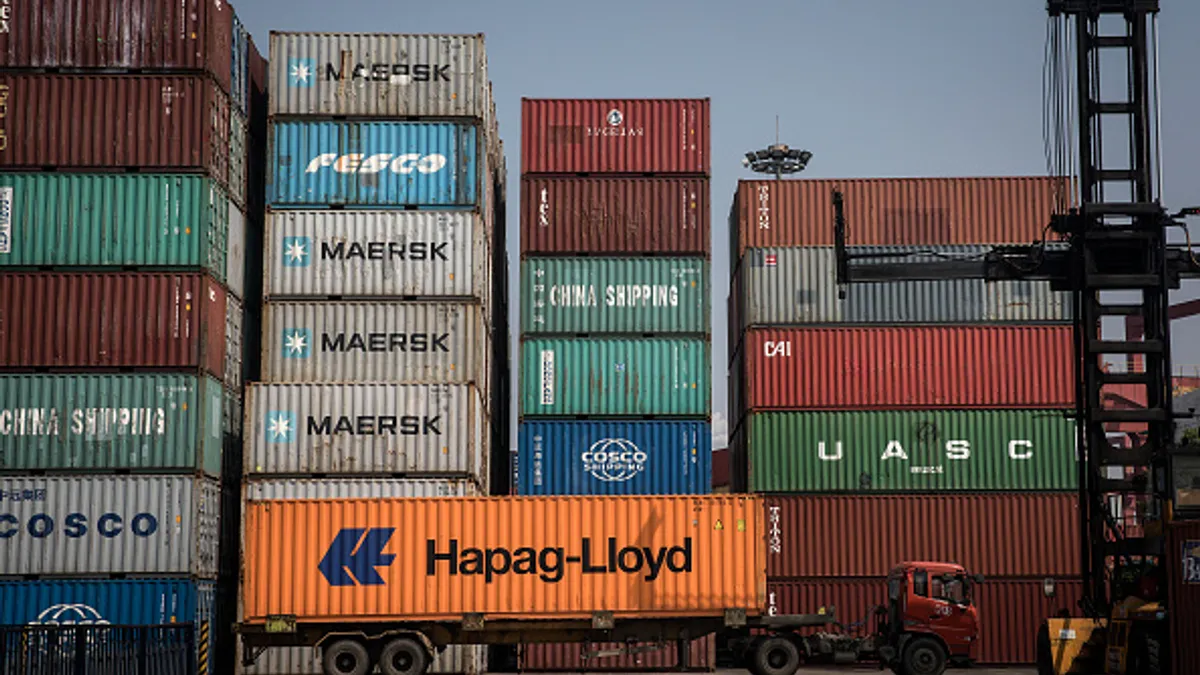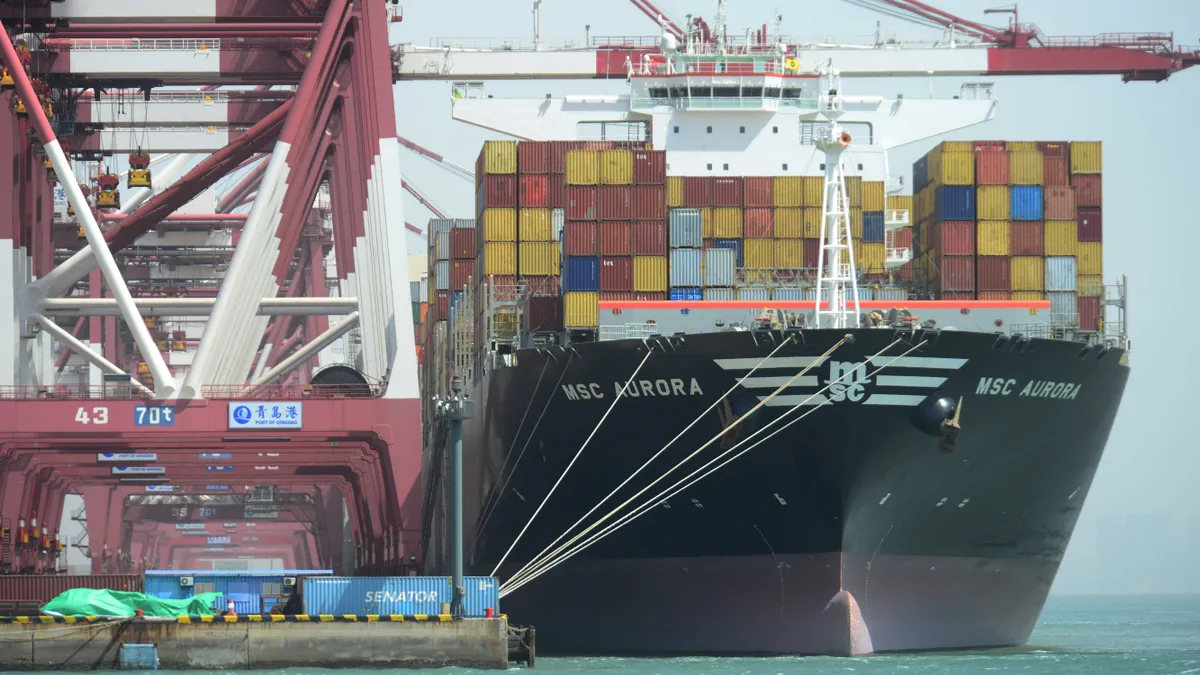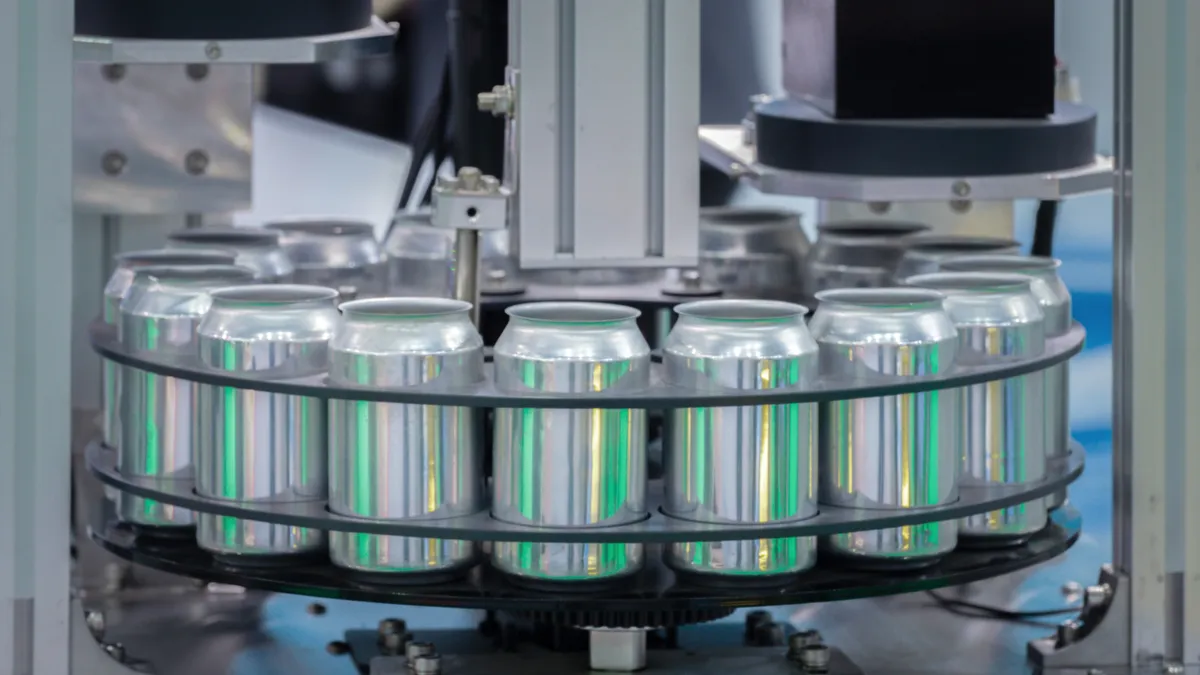A gable-top carton supply chain snag has milk suppliers scrambling for alternative carton sources. If it continues, the shortage could result in suppliers dumping milk, higher consumer dairy prices and schools that struggle to meet federal nutrition requirements.
Customers report difficulty in procuring 8-ounce, or half-pint, cartons as well as 4-ounce cartons. The U.S. Department of Agriculture’s Food and Nutrition Service acknowledged in an Oct. 25 memo that some schools were having trouble getting their supplies of milk due to supply chain issues, highlighting that it is a packaging issue and not a milk issue.
The problem could become more widespread and affect grocery store supplies; anecdotal reports indicate some areas already are experiencing this.
"It'll affect anybody that uses paper cartons for this serving of milk," said Keith Kimball, chair of the Northeast Dairy Producers Association, while reiterating that the disruption stems from packaging and not dairy. "The bigger issue is the institutions that solely rely on paper cartons for their milk supply. ... In grocery stores, you can still get the plastic bottles and different sizes."
In recent weeks, news of the milk carton trouble initially trickled in from schools, dairies and others on the East Coast, and the International Dairy Foods Association said via a Nov. 3 email that “supply challenges are very localized.” However, the California Department of Education also issued a notice about the situation, and some national media reports already are calling this a nationwide problem.
Some point to packaging manufacturer Pactiv Evergreen as the problem’s source, but dairy producers say they can’t get answers about exactly what’s going on or when business will return to normal. Pactiv Evergreen did not respond to requests for comment prior to publication.
New York State Assemblyman Chris Tague took to X, formerly known as Twitter, to comment on the shortage’s effects on the milk supply, calling it a “national crisis.” He said Evergreen Packaging, now part of Pactiv Evergreen, is struggling to provide the needed materials.
We're in the middle of a national crisis. W/ a shortage of paperboard, companies like Evergreen Packaging are struggling to provide materials needed for packaging milk for schools, prisons, hospitals & other facilities that serve nutrient rich meals. Read the full release below. pic.twitter.com/Oyv1PnkNwc
— Chris Tague (@chrisWCtague) Nov. 2, 2023
Representatives from New Jersey-based Cream-O-Land Dairy, which serves markets along the East Coast and in the Caribbean, echoed the sentiment. They said that Pactiv Evergreen supplies their half-pint cartons, and shipments started going awry in September.
“We didn’t get our shipment. So then we started to inquire, ‘Where’s the shipment?’ and we were getting no answers,” said Scott Stoner, vice president of operations at Cream-O-Land. He said Pactiv Evergreen salespeople eventually offered partial responses, but they didn’t provide information about what’s causing the apparent shortage or when it will be resolved. Rather, the company stated at the time it would only provide 50% of Cream-O-Land’s weekly half-pint carton needs, he said. Cream-O-Land posted a notice on its website alerting customers to the problem, suggesting a potential months-long effect to shipments.
In early October, about a month into the situation, Pactiv was behind on delivering about 200 pallets — or approximately five trailers full — of product, according to Mike Stoner, quality control director at Cream-O-Land. At that time, a salesperson reportedly mentioned a new software that caused difficulty determining inventory levels and locations, he said. But both Scott Stoner and Mike Stoner said that was simply an anecdotal conversation, not an official response from Pactiv, and that’s not necessarily the crux of the widespread supply issue.
Supply chain trickle-down effects
While sources so far say Pactiv Evergreen is at the heart of the supply crunch, the effects are trickling over to other carton producers.
Mike Stoner said Cream-O-Land contacted Tetra Pak, another major 8-ounce carton producer for the U.S., to help fill its unmet carton supply needs, and the company initially agreed. But a few weeks along, Tetra Pak backed out and said it was not taking new carton customers because of the influx of demand, according to Stoner.
“Tetra Pak is aware of the recent shortage of gable top cartons for chilled milk. While the shortage is not affecting Tetra Pak directly, we are seeing increased demand for our single-serve dairy milk cartons as a result,” said Seth Teply, president and CEO at Tetra Pak U.S. and Canada, via email. The company is doing its best to ramp up production to meet market demand, he said.
“Tetra Pak has increased overtime in our factory to ramp up production of single-serve chilled gable top cartons. However, we do not currently have the production capacity to fully make up for the unexpected shortage, which means we are unable to fulfill every new request for additional supply,” he said.
In addition to more demand for chilled gable-top cartons, Tetra Pak also is experiencing extra interest in its shelf-stable cartons for dairy milk, Teply said.
Because of the trouble finding supply domestically, Cream-O-Land has reached out to foreign-based carton suppliers. But there are challenges, including with U.S. Food and Drug Administration food-safety laws governing which imports are acceptable for use in the U.S.
Cream-O-Land is having some success with engaging with Norway-based Elopak, but the company only has the capacity to provide a limited supply, according to Mike Stoner. Elopak did not provide comment prior to publication. While the dairy continues reaching out to other carton suppliers, the Stoners believe they’re nearly out of alternatives other than packaging suppliers in China, which come with their own set of hurdles.
“We've been talking to a couple of brokers trying to get things lined up, but every time you get information about the food safety stuff, [it doesn’t] line up,” said Mike Stoner.
Dairy disruption
The low carton supply has been acutely affecting schools because that market heavily uses half-pint cartons for milk. The carton shortage also touches other drinks, such as juice, but milk is a required part of school breakfast and lunch programs while other beverages are not.
“Currently, schools must offer fat-free and/or low-fat (1%) unflavored milk as part of school breakfasts and lunches,” according to USDA’s website. The lack of half-pint milk container availability prompted the agency to ease the requirements in the Oct. 25 memo, noting schools experiencing shortages can “serve meals during an emergency period with an alternate form of fluid milk or without fluid milk.”
The School Nutrition Association confirmed that it has been sharing USDA’s guidance on the topic and that schools should notify their state agencies if procurement problems persist. The group also clarified that juice is a less critical issue because schools can opt to serve fruit instead.
While some supplies are being affected, “It is inaccurate, however, to say some schools are going without milk — there are abundant milk supplies and processors are working with schools to ensure all children have access to nutritious milk,” Matt Herrick, senior vice president of public affairs and communications at the International Dairy Foods Association, said via email. “Milk processors are working together and making plans with alternative packaging suppliers to bring additional capacity online in the coming weeks.”
Some of the solutions include packaging the milk in larger containers, like standard gallon jugs, and having school employees pour individual servings into cups. Cream-O-Land representatives said this tactic is also being used in other facilities that primarily serve milk in half pints, such as healthcare facilities or prisons. But staffing issues at these facilities can complicate the ability to distribute milk from larger containers, said Scott Stoner. And prisons have a unique barrier, according to Mike Stoner, in they typically don’t want plastic containers because that material has the potential to be fashioned into weapons.
What’s the root cause?
Big questions remain about what’s causing the decreased carton shipments and how long the supply disruptions will last.
Assemblyman Tague speculated in his recent comments on X that the industry could be experiencing a paperboard shortage. Scott and Mike Stoner also questioned whether a paperboard shortage exists, although they noted such a shortage, in theory, would also affect other products, not just half-pint containers. No paper or packaging industry sources that Packaging Dive contacted confirmed a paperboard shortage.
Scott and Mike Stoner noted Pactiv Evergreen’s announcement earlier this year that it would close its carton converting facility in Olmsted Falls, Ohio, along with a paper mill in Canton, North Carolina, resulting in the elimination of 1,300 jobs. They questioned whether the lost capacity due to closures, especially at the Ohio carton facility, might be impacting carton inventories. Packaging Dive did not receive confirmation or other comment from Pactiv Evergreen about whether the closures are affecting carton supply.
Cream-O-Land dairy, and the industry in general, are desperate for more information about what’s causing the apparent carton shortage and for visibility into when the issue could be resolved, said Mike and Scott Stoner. They said livelihoods are being impacted, but thus far transparency is scarce.
“Nobody knows. Nobody's talking,” said Scott Stoner. Mike Stoner added that they haven’t “heard a peep out of Washington, either,” other than the Oct. 25 USDA memo regarding milk substitutions in schools.
Scott Stoner said beverage suppliers “can’t plan — long term, short term, whatever.” While some analysts suggest the situation could spill over into 2024, IDFA’s Herrick said, “Where they exist, we expect carton supply issues to improve in the coming weeks.” Mike Stoner fears that without any information or solutions in the next week or two, dairies and farmers might be forced into drastic measures — including, potentially, milk dumping and layoffs — and consumer milk prices might rise.
“It’s a bigger issue than anybody knows right now,” he said.



